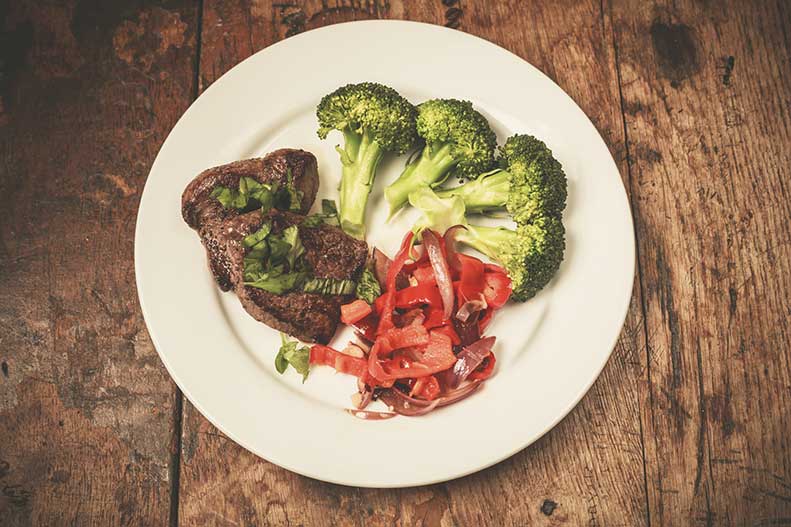Reviewed by Sports Medicine
April 2, 2016
Pros and Cons of the Paleo Diet
Sports dietitians work with athletes on ways to optimize their performance through what they eat and drink. There is no “perfect” diet for everyone, but there are a lot of wrong ones — or plans that may compromise performance. You may have heard about the paleo diet, but how much do we really know about this? Here’s a breakdown.
What Is the Paleo Diet?
This diet was developed by Loren Cordain, PhD, a researcher from Colorado State University, who started doing studies in the 1970s. He says that the paleo diet is the way humans were genetically designed to eat. Let’s explore this:
1. We are not cavemen.
2. Recent studies suggest that early man was more of a vegetarian (plant eater) and not as much of a carnivore (meat eater).
3. Most of us don’t just hunt for our food.
4. We have many food choices available.
5. There has been a lot of research on the health benefits of foods that are not part of the paleo diet.
Paleo Diet Food List
- Lean meat, such as chicken, turkey, pork, lean beef, and buffalo (bison)
- Fish
- Seafood
- Fresh fruit
- Nonstarchy vegetables, such as lettuce, asparagus, green beans, broccoli, cabbage, Brussels sprouts, cauliflower, and spinach
- Nuts, like almonds, walnuts, cashews, pecans, and pistachios (no peanuts)
- Seeds, like pumpkin and sunflower
- Eggs
- Plant-based oils, such as olive, walnut, grapeseed, and coconut oil
What Can’t You Eat on the Paleo Diet?
- Grains, such as oats, wheat, barley, and rice — which means no cereal, bread, pasta, bagels, crackers, or granola bars
- Starchy vegetables, such as potatoes and corn, as well as potato and corn chips, tortillas, and popcorn
- Legumes or beans — so no peanuts or peanut butter; no soy foods, such as soy milk, tofu, or edamame; no hummus or beans of any kind
- Dairy products — so no milk, yogurt, cheese, or ice cream
- High-fat meats, such as salami, bologna, pepperoni, hot dogs, ground meat, rib roast, and ribs
- Sugars, such as in soda, honey, jam or jelly, syrup, candy, cakes, cookies, and sports drinks
- Processed foods or trans fats, such as doughnuts, french fries, fruit snacks, or macaroni and cheese
- Salty foods, such as crackers, chips, pretzels, soy sauce, added-salt foods, or sports drinks
Essential Paleo Diet Tips
1. The diet does not specify portions of the allowed foods, and because there aren’t a ton of approved foods, you may find yourself overeating some of them. This wouldn’t be a calorie issue if you ate a lot of lettuce, but could be a problem if you ate a 5-pound jar of nuts.
2. The diet is higher in protein, which is an important nutrient to build and maintain muscle. But too much protein usually means too little carbohydrate, which is the energy source for exercise.
3. The amount of carbohydrates may be inadequate for athletes. The diet does allow some carbohydrates, but it is still fairly restrictive.
Paleo Diet Benefits
- You are more likely to eat a clean diet without additives, preservatives, or chemicals.
- There are anti-inflammatory benefits from the plant nutrients in fruits, vegetables, oils, nuts, and seeds.
- If you are eating more red meat, you will get more iron.
- You may see improved satiety — a feeling of fullness between meals, due to the higher intake of protein and fats.
- Many people lose weight primarily due to the limited food choices.
Negative Effects and Disadvantages of the Paleo Diet
- It can get expensive.
- You don’t eat any grains or dairy which can be good for health and energy.
- This diet can be difficult for vegetarians, especially since it excludes beans.
- Most athletes need between 3 to 6 grams of carbs per pound of their body weight, per day. This would be very hard to do with just fruits and vegetables.











